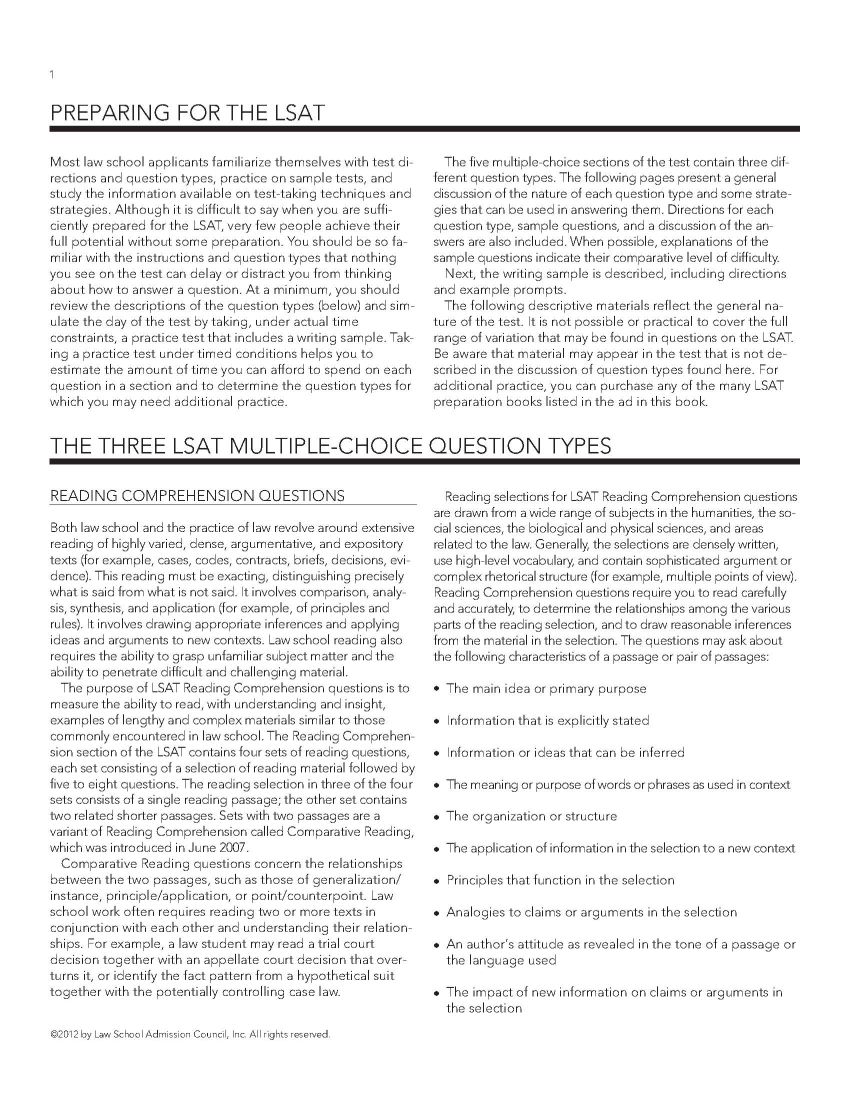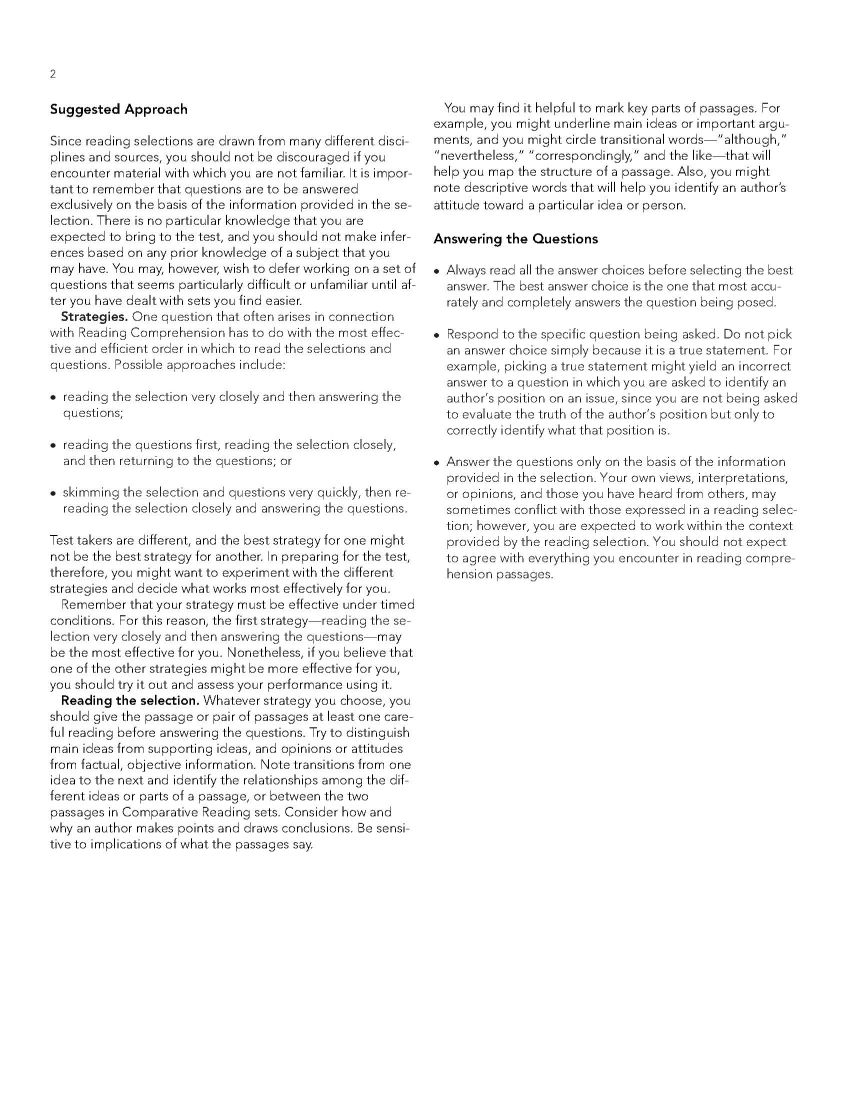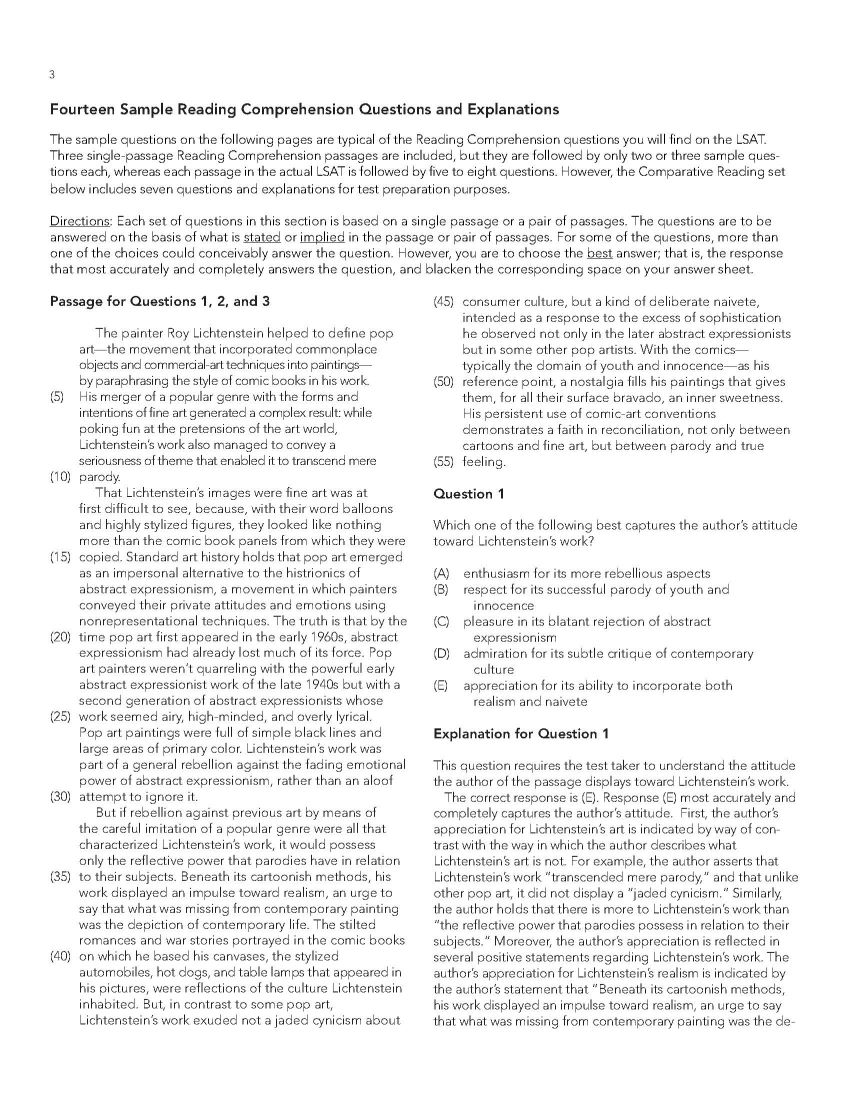|
#3
12th July 2018, 09:28 PM
| |||
| |||
| Re: Funny LSAT Questions
The previous year question paper for LSAT (Law School Admission Test) is as follows: Passage for Questions 1, 2, and 3 The painter Roy Lichtenstein helped to define pop art the movement that incorporated commonplace objects and commercial-art techniques into paintings by paraphrasing the style of comic books in his work. His merger of a popular genre with the forms and intentions of fine art generated a complex result: while poking fun at the pretensions of the art world, Lichtensteins work also managed to convey a seriousness of theme that enabled it to transcend mere parody. That Lichtensteins images were fine art was at first difficult to see, because, with their word balloons and highly stylized figures, they looked like nothing more than the comic book panels from which they were copied. Standard art history holds that pop art emerged as an impersonal alternative to the histrionics of abstract expressionism, a movement in which painters conveyed their private attitudes and emotions using nonrepresentational techniques. The truth is that by the time pop art first appeared in the early 1960s, abstract expressionism had already lost much of its force. Pop art painters werent quarreling with the powerful early abstract expressionist work of the late 1940s but with a second generation of abstract expressionists whose work seemed airy, high-minded, and overly lyrical. Pop art paintings were full of simple black lines and large areas of primary color. Lichtensteins work was part of a general rebellion against the fading emotional power of abstract expressionism, rather than an aloof attempt to ignore it. But if rebellion against previous art by means of the careful imitation of a popular genre were all that characterized Lichtensteins work, it would possess only the reflective power that parodies have in relation to their subjects. Beneath its cartoonish methods, his work displayed an impulse toward realism, an urge to say that what was missing from contemporary painting was the depiction of contemporary life. The stilted romances and war stories portrayed in the comic books on which he based his canvases, the stylized automobiles, hot dogs, and table lamps that appeared in his pictures, were reflections of the culture Lichtenstein inhabited. But, in contrast to some pop art, Lichtensteins work exuded not a jaded cynicism about consumer culture, but a kind of deliberate naivete, intended as a response to the excess of sophistication he observed not only in the later abstract expressionists but in some other pop artists. With the comics typically the domain of youth and innocence as his reference point, a nostalgia fills his paintings that gives them, for all their surface bravado, an inner sweetness. His persistent use of comic-art conventions demonstrates a faith in reconciliation, not only between cartoons and fine art, but between parody and true feeling. Question 1 Which one of the following best captures the authors attitude toward Lichtensteins work? (A) enthusiasm for its more rebellious aspects (B) respect for its successful parody of youth and innocence (C) pleasure in its blatant rejection of abstract expressionism (D) admiration for its subtle critique of contemporary culture (E) appreciation for its ability to incorporate both realism and naivete Question Paper for LSAT (Law School Admission Test)     |